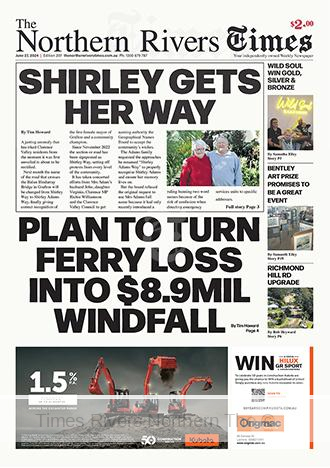Beyond Blue champions peer support for men’s mental health
Beyond Blue is encouraging men to check-in with peers online for early mental health support as part of Men’s Health Week.
The annual week’s theme for 2024 is ‘men’s health checks’, with a focus on encouraging men to adopt new, healthier habits to improve physical and mental wellbeing.
Beyond Blue Clinical Spokesperson Dr Luke Martin said men are less likely than women to seek support for mental health issues and there remains a stigma which can stop them seeking support.
“Many men like to be self-reliant and often try to handle problems on their own and can be reluctant to confide in friends and family about how they are feeling,” Dr Martin said.
“Unfortunately, this can lead to unhealthy coping behaviours, which can result in problems snowballing. Taking steps to get support early on can really help people feel better sooner and anonymous online forums can provide that safe and less confronting option that some men need to open up.”
Research reports the effectiveness of digital peer support models, which provide people with a safe and supportive environment to discuss their issues.
In the digital age, online forums, like Beyond Blue’s Forums are a valuable platform, providing people with a free, accessible, anonymous, welcoming place to discuss their mental wellbeing with those who understand because they have had or are having similar experiences.
Beyond Blue Forums are moderated by trained professionals, together with experienced volunteers known as Community Champions, who ensure the Beyond Blue Forums remain a safe and supportive place, and that everyone who posts a question is heard and responded to.
Now in his mid-70s, Community Champion Mark Davis volunteers approximately 20 hours a week to support others through the Forums.
“In Australia, we’ve been brought up in a culture where men don’t complain, they have traditionally needed to be the strong, stoic ones; and they just want to fix the problems,” Mr Davis said.
“The forums offer anonymity and discretion, allowing men in particular to express themselves openly without fear of judgment or stigma.”
Mr Davis often helps young men to navigate relationship break ups and study stress, and supports mature-age men experiencing depression, relationship problems, are single parents, or worried about family member’s mental health.
“I have Post Traumatic Stress Disorder (PTSD), depression, anxiety and was suicidal, and about 10 years ago, I wanted to see how other people handled the same thing,” he said.
“I had medical support, but I was battling my issues in isolation, so I joined the Beyond Blue Forums, to just look at them; I had no intention of writing anything – and I had no intention of ever using my real name; I simply wanted to see how others were coping with similar mental health issues.”
Dr Martin says getting support early, means you get well sooner and stay well.
“Latest research shows that 40 per cent of users of the service are men; but we encourage more men to reach out to our Forums; whether it’s to take that first step to ask for help, or to complement existing treatment, our team is available whenever you need them.
“By destigmatising mental health conversations and promoting peer support initiatives, we can create a culture where men feel comfortable seeking the support they need to get back on track – no problem is too big or too small to ask for help,” Dr Martin said.
Beyond Blue’s Peer Support Forums average 150,000 visits to the forums every month.
The content is monitored by moderators 24 hours/7 days a week.
Men can also check-up on their mental health using Beyond Blue’s online checklist, and receive recommendations tailored to their need. Beyond Blue Forums. For people who need more immediate support, the Beyond Blue Support Service provides 24/7 free counselling, advice and referrals via phone 1300 22 4636, webchat or email.





 Tweed Shire News2 years ago
Tweed Shire News2 years ago
 Motoring News1 year ago
Motoring News1 year ago
 COVID-19 Northern Rivers News3 years ago
COVID-19 Northern Rivers News3 years ago
 COVID-19 Northern Rivers News3 years ago
COVID-19 Northern Rivers News3 years ago
 Northern Rivers Local News3 years ago
Northern Rivers Local News3 years ago
 Health News3 years ago
Health News3 years ago
 COVID-19 Northern Rivers News3 years ago
COVID-19 Northern Rivers News3 years ago
 NSW Breaking News3 years ago
NSW Breaking News3 years ago





















